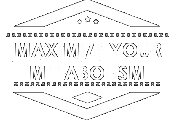“There’s a strategy in creating a fat burning workout where you experience greater weight loss leading to a tighter, healthier body. More details here.”
Ask any American what comes to mind when he or she thinks of a fat burning workout. Most will reply with the name of some form of aerobic exercise. Such as bicycling, swimming, or cross-country skiing.
Ever since Dr. Kenneth Cooper’s first book, Aerobics, was published in 1968, the benefits of aerobic exercise have been widely touted. In fact, the fitness boom of the 1970s and 1980s coincided with the rise in aerobic exercise, especially recreational running and jogging.
Aerobic exercise can bestow many benefits on those who engage in it. This includes increased lung capacity and improved heart function. Both of which help supply oxygen to the working muscles and improve the health of your heart and cardiovascular system. But aerobic exercise does little to develop or maintain muscular strength.
Aerobic exercise is important to a top-flight metabolism. But it takes a back seat to strength training when it comes to:
-
controlling the way you go about burning calories and
-
losing weight as well as the amount of weight you lose.
This article and the next few articles were designed to give you a clear understanding of how certain types of exercise affect the functioning of your body and what you can do to gain control. You must learn both of these if you are to truly maximize your metabolism for burning fat.
Strength Training For A Fat Burning Workout
The term strength training refers to developing muscle strength and endurance through resistance training.
Muscle strength refers to a one-time maximum effort of force that one applies in an isolated movement of a single muscle group. Technically defined, muscle endurance is the ability of muscles to apply a sub-maximal force repeatedly or to be exercised over an extended period of time.
Common exercises that build both muscular endurance and strength are:
- push-ups
- sit-ups
- chin-ups
- a variety of machine exercises
- lifting of free weights
Strength training will prevent muscle tissue from declining as you get older.
Will strength training make me bulky?
Contrary to popular myth, strength training will not make you bulky unless you set up a strenuous program that’s geared to that particular purpose.
Keep in mind that the chief metabolic difference between aerobic exercise (exercise that uses oxygen during performance) and anaerobic strength-building exercise is that . . .
-
- while aerobic exercise burns more body fat during the actual exercise session,
- anaerobic strength-building exercise continues to cause calories and body fat to burn for quite a while after the exercise session is over.
For this reason, anaerobic exercise has a far more dramatic effect on your resting metabolic rate. You’ll see why in a moment, anaerobic exercise is the cornerstone of a fat burning workout.
Scientists have only recently begun to recognize this benefit of anaerobic exercise. Training for muscular strength has long been popular among bodybuilders and professional athletes. But it is only now finding its way as a fat burning workout for other people. The evidence is now clear that muscle-enhancing exercises offer health and fitness benefits that everyone needs.
Metabolic Benefits Of Strength-Building Exercise
One of the principal benefits of strength training is that it builds the density of muscle. The denser the muscle, the more calories that are burned up. Hence, a fat burning workout includes strength training exercises.
Losing muscle but continuing to take in the same amount of food forces people to put on weight in the form of body fat.
Unfortunately, that’s precisely what tends to happen to us humans over the course of our adult life.
As we age, our metabolism decreases by about one-half of one percent per year. When we reach our thirties, we begin to lose muscle mass. So we’ll just naturally gain weight unless we take measures to prevent it from happening.
A pound of muscle burns how many calories a day?
A pound of muscle burns up to fifty calories a day.
Considering that every pound of muscle burns up to fifty calories a day, it’s easy to understand the contribution that muscle mass makes to losing weight quickly and effectively—and keeping it off in the long run.
The Maximize Your Metabolism program is intended to help you build a strong metabolism, decrease your body fat, and increase your muscle density, but not to increase your weight.
Does muscle weigh more than fat?
Although muscle weighs more (per unit volume) than body fat, muscle takes up far less space.
Thus, the end result of going through this program will be a much slimmer, tighter, more efficient, and healthier body.
Traditional Theory On Weight Maintenance
Traditionally, it was thought that metabolic balance—and therefore weight maintenance—could be achieved through a simple balance of energy sources:
- Input had to be equal with output.
- If you consumed more calories than you burned, you would gain weight; if you burned more calories than you ate, you would lose weight.
- In order to maintain a given weight, the number of calories consumed had to equal the number of calories spent.
Although this was a sound theory, it failed to take into account the body’s awesome ability to adapt. It is now widely recognized that adaptation is one of the important functions of our rather sophisticated metabolic system.
The Reality Of Energy Balance
The creation of an energy deficit, either through decreased calorie consumption or increased calorie expenditure, will result in weight loss for most people. Unless this is done properly, however, weight loss will probably be achieved only the first few times a person creates an energy deficit—and even then, the weight loss isn’t likely to be long lasting.
For every 3500 calories of energy used up, there should be a reduction in body weight of one pound.
The more often a person experiences a severe energy deficit, however, the less of an effect it has on weight loss. This adaptive effect is well documented through the experience of the yo-yo dieting generation.
The greater and/or more frequent the energy deficit, the more difficult it becomes to lose weight. (And the easier it is to gain weight!).
- Our body’s survival mechanisms respond to drastic calorie deficits just as they would during times of famine. That is, they become more efficient at using food energy, by burning calories more slowly.
- That means when dieters consume greater quantities of food, their slower metabolism causes the excess nutrients to be stored as fat. The body wants to save that stored fat in case there’s another deficit sometime in the future.
Let me repeat this very crucial point: The more instances in which you restrict your calorie intake for a prolonged period of time, the slower your metabolism becomes. The slower your metabolism becomes, the more calories your body will store as fat the next time you eat.
Solution: Balanced Fat Burning Workout Program
The best way to combat this natural tendency to conserve energy is to reset your metabolic rate with a comprehensive program of strength building and aerobic activity. Both types of exercise are vital to firing up your metabolism. What will help you make weight loss a part of your life—and give you a greater sense of personal satisfaction as a result—is a balanced fat burning workout program.
Strength Training To The Rescue
While it is common knowledge that aerobic exercise is crucial in helping the overweight shed unwanted pounds, a growing portion of the research in the field of health and fitness suggests that strength training plays an especially important role in any fat burning workout routine.
Wayne L. Wescott, Ph.D., a physician and author of several popular fitness books as well as a former YMCA fitness director, is one of the leading proponents of strength training. His research—the results of which are consistent with my own findings—shows that dieters who engage in both strength-training exercise and aerobic exercise lose significantly more weight than those who limit themselves to aerobic exercise alone.
This greater weight loss in those who take up strength training stems from a combination of greater expenditure of calories and a heightened metabolism that burns fat throughout the day.
According to Wescott, these dramatic results are traced to the metabolic differences between muscle and fat.
“Muscle is very active tissue,” says Dr. Wescott, “and requires more energy to maintain than fat.”
As We Grow Older . . .
The trouble is that as we grow older we lose valuable muscle mass.
Physiologists estimate that every pound of muscle we lose reduces our resting metabolic rate (RMR) by up to fifty calories a day. That’s bad. We need to retake control by replacing that lost muscle mass via a regular strength-training program.
As we age, Dr. Wescott explains, our RMR naturally decreases by about one-half of one percent per year.
Thus, if we continue to eat the same types of food that we did when we were younger—and in the same amounts that we did then—we’ll automatically gain body fat, unless we take preventive measures. Indeed, we will not only add body fat but also lose vital muscle density and strength.
As a result . . .
- our bone density will decrease,
- the health of our internal organs (including our heart) will decline,
- and our mental clarity will suffer.
As you can see, in touting only the weight-loss benefits of including both aerobic and anaerobic exercise in a daily fitness regimen, we’re really just scratching the surface in terms of the good that can accrue.
When overweight people depend on diet alone to control weight, what often happens is that they lose muscle, not fat.
In fact, up to 50 percent of weight loss that results from dieting alone is in the form of losing lean muscle. This poses an enormous problem.
Lean muscle burns calories, even while the body is at rest.
While fat stores calories.
The more fat we store, the easier it is to gain weight. Strength training turns this situation around by helping us to shed fat.
The Metabolic Good News
For every pound of fat that you replace with muscle, you’ll lose half a pound of body weight. Replace ten pounds of fat with muscle, and you’ll notice enormous changes in your fat-burning potential. That includes your ability to eat greater amounts of food without gaining weight.
Best of all, strength training provides results quickly. It can help you add over a pound of muscle each month that you’re in training. In just a few months, you can rebuild the muscle you may have lost over the years as a result of a sedentary lifestyle.
The upshot of all this is that people who try to control their weight through diet alone can still have the metabolism of a “fat” person, even if they have a temporarily thinner body.
- And when these people resume normal eating, they often find that the old weight returns.
- This time with “interest,” in the form of added pounds, leaving them even heavier than at the start.
- This can ultimately lead to the yo-yo syndrome: ongoing fluctuations in body weight.
It is far more efficient to use exercise (rather than diet) as a metabolism-boosting and fat burning workout strategy. We burn off calories both during and after exercise—even as we sleep, watch television, or read a book. Strength-building exercises fire up our caloric “furnace” and raise our resting metabolic rate. And that’s not all!
What Happens When You Weight Train
Physiologically speaking, when you engage in strength-training exercises, your body causes your muscle tissue to break down. In a sense, you actually injure your muscle tissue. Then when you rest the affected muscles and supply them with the proper nutrients, they automatically seek to protect themselves from further injury by becoming stronger and more responsive.
This may sound like a harsh—perhaps even a painful—way to set about losing weight. But it’s totally natural and actually very healthful.
- Your body adapts to stress by repairing its muscle tissue and stimulating new muscle-tissue growth to overcome the additional workload.
- In essence, your muscles become stronger and denser.
- And, as a result, your muscles withstand stress better in the future.
Here’s an example of how you might progress in a strength-training program:
- Say that you’re just starting a fat burning workout regimen. And you can perform ten repetitions of a barbell bench press using 100-pound weights.
- If you do four sets of this exercise three days a week (say Monday, Wednesday, and Friday), your muscles will become denser and stronger. And in two to three weeks you’ll be able to do twelve to fourteen repetitions.
- At that point, you’ll be ready to start lifting heavier weights (adding, say, five or ten pounds). So you should (temporarily) go back to doing just four sets of ten repetitions each. And then gradually build up to fourteen or so repetitions.
- After a few more weeks, you’ll be able to lift still-heavier weights.
This example illustrates the “progressive resistance” concept:
- As soon as your body adapts to lifting a heavier set of weights, you give it more.
This process forces your muscles to acclimate and ultimately to become healthier. It’s a surefire way to build up your metabolism.
Why Blood Supply To Your Muscles Is So Important
As a practical matter, many different forms of exercise, including those that are designed primarily for aerobic conditioning, will generate some degree of strength and muscle development. But since strength-building exercises exert such formidable stresses, your muscles will need a greater supply of blood in order to carry on their restorative and strengthening processes.
Many of the strength-training principles I’ll be teaching you are specifically designed to enhance the flow of blood to your muscles.
- When you are training properly, you’ll notice a dramatic step-up in the amount of blood that rushes to your muscles. This is precisely what is supposed to happen—and will if you train correctly.
- When blood is forced into your muscles during your fat burning workout program, it helps speed up the process of repair which your muscle tissue needs to undergo.
If you follow the program laid out in this website, your muscles will rebuild themselves, becoming denser and stronger than they were originally. That’s why you must be careful and follow this program to the letter.
Never perform your strength exercises out of order or train the same muscle group two days in a row. If you do, your muscles won’t have sufficient time to repair themselves.
Before You Begin Your Fat Burning Workout
Many people schedule their exercise routine close to mealtime. Don’t do that!
As mentioned above, one of the most important elements of weight training is that it forces huge amounts of blood to flow to your muscle tissue. This is what gives you the strength to do the exercise and enables your body to repair any temporary damage that may occur.
- Digestion is also a major user of blood.
- So subjecting your body to the processes of digestion and strenuous exercise simultaneously could cause your heart and your digestive system to overwork. This could deprive your hungry muscles of the requisite nutrients.
If you do your exercise routine too close to mealtime, you’ll end up compromising your strength-training program right from the start.
Eating just after or just before your fat burning workout won’t allow your system to get the proper amounts of blood it needs.
- Plan on waiting at least a full hour after a meal before exercising.
- And wait at least a half-hour after your workout is over before you eat your next meal.
In the next article, we’ll get more detailed on a good weight lifting program, so you can start burning fat. >> Next Page – Weight Lifting Program


